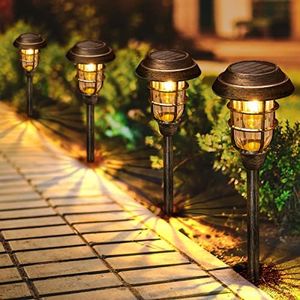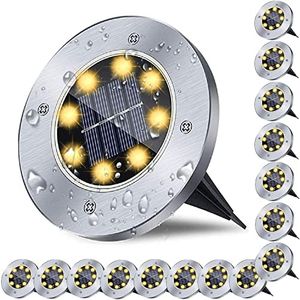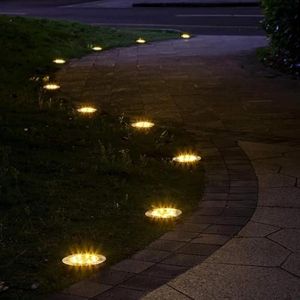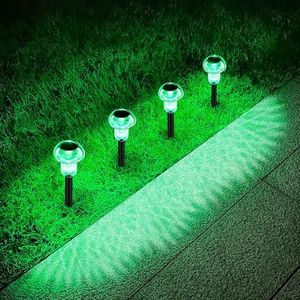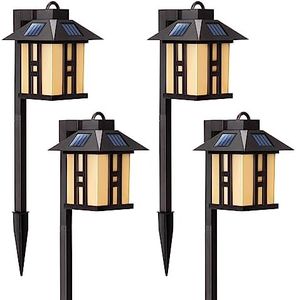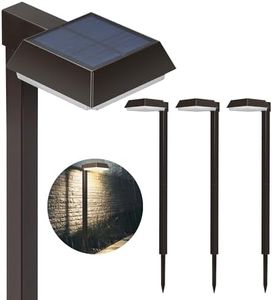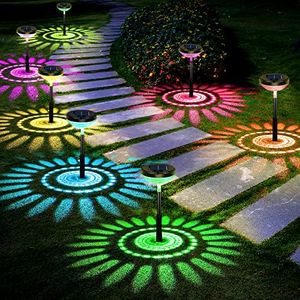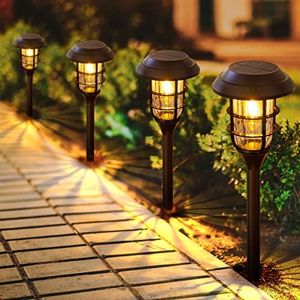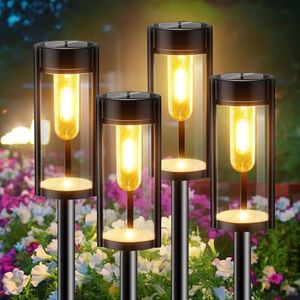We Use CookiesWe use cookies to enhance the security, performance,
functionality and for analytical and promotional activities. By continuing to browse this site you
are agreeing to our privacy policy
10 Best Solar Pathway Lights
From leading brands and best sellers available on the web.Buying Guide for the Best Solar Pathway Lights
Choosing the right solar pathway lights can make a big difference in your outdoor space, offering both safety and ambiance. Before deciding, consider where you want to place them, how much sunlight the area gets, and whether you want a decorative look or just simple illumination. Identifying your priorities—be it brightness, lasting power, style, or the ease of installation—will help you narrow down the best options for your needs.Brightness (Lumens)Brightness is measured in lumens and tells you how much light the solar pathway light emits. This is important because it determines how well-lit your path or garden will be at night. Lower lumens, such as 2-15, create a subtle glow ideal for ambiance, while higher lumens, like 20-100 or more, provide brighter illumination suitable for visibility and safety. Consider how much light you need—if you just want to mark a path, lower lumens may suffice, but for safe walking and tasks, choose higher lumens.
Battery Life and CapacityBattery life refers to how long the light will stay on after sunset, while capacity means how much energy it can store from sunlight during the day. This matters because it affects how reliable your lights are through the night. Shorter battery life (4-6 hours) might work for early evening use, while longer life (8-12 hours) is better for all-night lighting. Match your choice to how long you need the lights to stay on—think about your typical usage and the length of nighttime in your area.
Solar Panel EfficiencyThe solar panel collects sunlight and turns it into energy for the battery. Higher efficiency panels work better in less-than-ideal sunlight and can charge the battery faster, which is helpful if your location doesn’t get full sun all day. Basic panels do best in open, sunny spots; high-efficiency panels are preferable if you have shade or less direct sunlight. Consider your garden’s sun exposure when making your decision.
Weather Resistance (IP Rating)Weather resistance tells you how well the lights hold up in outdoor conditions, especially rain and dust. The IP (Ingress Protection) rating indicates this; for outdoor use, look for at least IP44, which means protection against splashes. For harsher environments (heavy rain, snow, or very dusty areas), higher ratings like IP65 are better. Always base your choice on your local climate and where you plan to install the lights.
Installation Type and EaseThis refers to how the lights are set up—some solar pathway lights are simply pushed into the ground with stakes, while others may require mounting hardware. If you want quick, tool-free installation, stake models are easiest. For more permanent or decorative setups, mounted options might be preferred. Pick the style that fits your skill level and the permanence you want for your lighting.
Light Color and StyleColor and style refer to both the appearance of the light fixture and the color temperature of the illumination (warm white, cool white, or colorful). Warm white offers a cozy feel, while cool white is brighter and crisper. Decorative colors can add personality to your garden. Choose based on the mood you want to create and how the fixture matches your outdoor decor.

